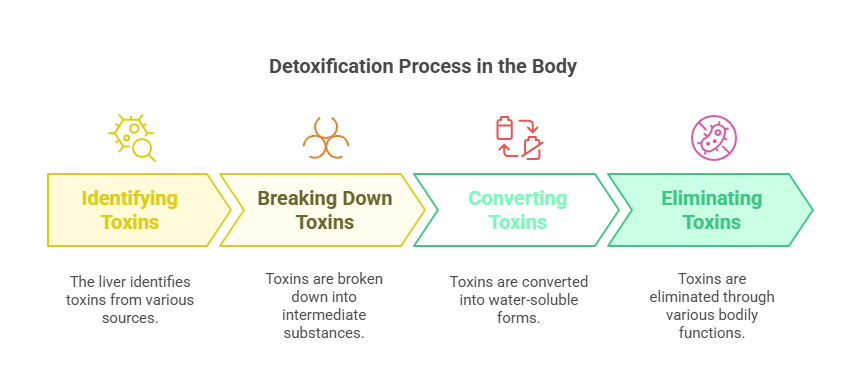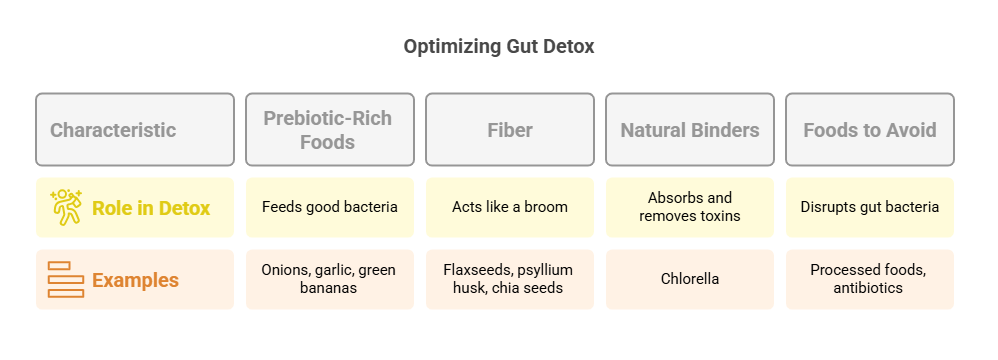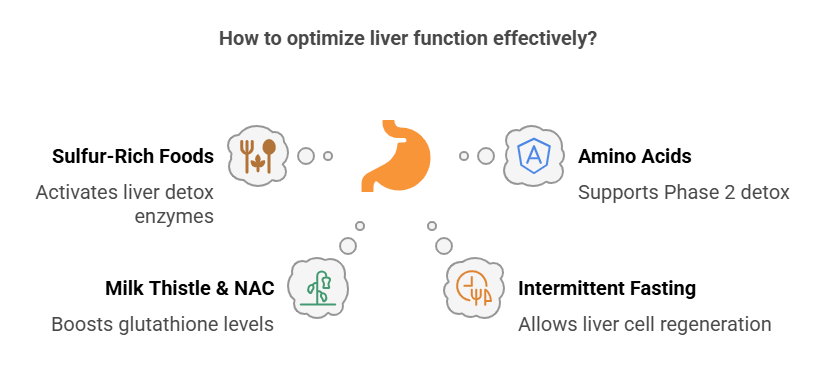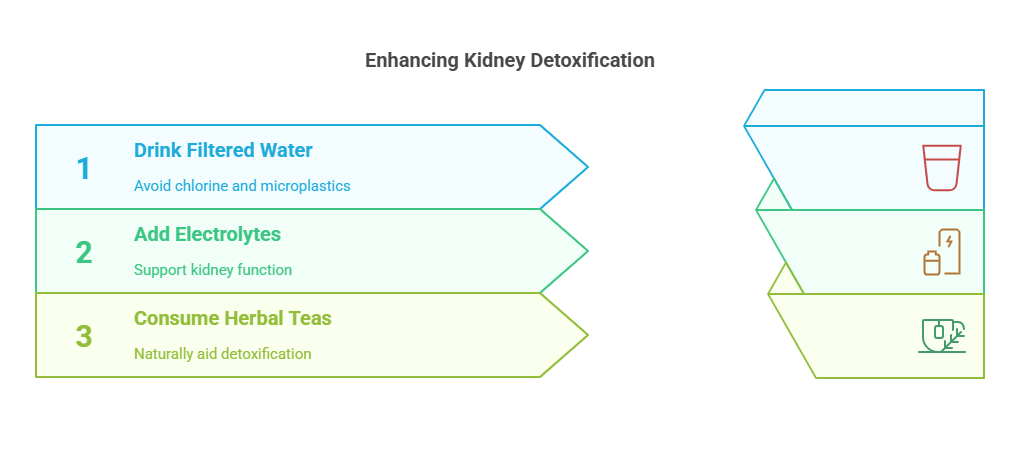What if you could reset your body the way you refresh your browser—clearing out the junk, speeding things up, and improving overall performance? That’s exactly what The Detoxification Protocols For Modern Lifestyles aim to do.
Every day, we’re exposed to pollutants, processed foods, stress, and chemicals that can overload our body’s natural detox systems. From microplastics in our water to pesticides in our food and heavy metals in the air, toxins are everywhere. The problem? Our bodies weren’t designed to handle this level of exposure.
Unlike trendy “cleanse diets” that promise overnight miracles, real detoxification supports your liver, kidneys, gut, and lymphatic system—the organs responsible for naturally removing waste.
So, what works? You don’t need an extreme cleanse. You just need the right detoxification protocols for modern lifestyles—scientifically proven methods that enhance your body’s ability to process and eliminate toxins naturally. Let’s read on Our natural detox system.
How Detoxification Actually Works

Your body is constantly in detox mode—even as you read this. Every breath, every meal, and even your sleep contribute to this process. It is the process your body uses to remove toxins (unwanted substances).
Detox happens in three phases, but most approaches focus only on one.
Phase 1: Identifying and Breaking Down Toxins
Your liver identifies toxins from food, pollution, and stress hormones, preparing them for removal. But here’s the catch: this process sometimes creates intermediate toxins—byproducts that can be even more harmful if not neutralized properly.
For detox to work efficiently, Phase 1 must be balanced with Phase 2—or those toxins get stuck in circulation, causing oxidative stress and inflammation.
Phase 2: Converting Toxins into a Safe, Removable Form
Once toxins are identified, your liver binds them to molecules that make them water-soluble so they can be excreted through urine, sweat, and stool. This phase is often the weakest link because many people lack the right nutrients to drive this process.
Without proper support, Phase 1 speeds up but Phase 2 lags behind—leaving harmful byproducts circulating in your system, triggering fatigue, skin issues, and hormonal imbalances.
Phase 3: Eliminating Toxins
Now, it’s time for removal. Your gut, kidneys, lungs, and skin expel toxins through:
- Bowel movements (via the gut)—Fiber binds toxins and removes them.
- Urine (via the kidney)—Hydration flushes them out.
- Breath (via the lung)—Deep breathing expels carbon waste.
- Sweat (via the skin)—Physical activity and sauna therapy help.
If any of these pathways slow down—whether due to dehydration, poor gut health, or stress—toxins recirculate instead of exiting.
So, how do you ensure your detox pathways stay open and efficient?
The Best Detoxification Protocols for Modern Lifestyles

You don’t need to overhaul your life overnight. Instead, small, strategic changes will make detox a natural, ongoing process.
1. Support Your Gut—Your #1 Detox Organ

Most people think of detox as liver-focused, but your gut is where toxins exit. If digestion is sluggish or gut bacteria are imbalanced, toxins can be reabsorbed instead of eliminated.
To optimize gut detox:
- Eat prebiotic-rich foods like onions, garlic, and green bananas to feed good bacteria.
- Consume fiber daily—flaxseeds, psyllium husk, and chia seeds act like a broom for toxins.
- Include natural binders like chlorella or fiber-rich foods to help absorb and remove harmful substances.
- Avoid processed foods and excessive antibiotics, which disrupt gut bacteria and weaken detox efficiency.
2. Optimize Liver Function (No, You Don’t Need a Juice Cleanse)

Your liver doesn’t need a “cleanse”—it needs the right nutrients to process and remove toxins effectively. Instead of liquid diets, focus on:
- Sulfur-rich foods (garlic, onions, cruciferous vegetables) that activate liver detox enzymes.
- Amino acids from protein sources (eggs, fish, beans) to support Phase 2 detox.
- Milk thistle and NAC to boost glutathione, your body’s master detox antioxidant.
- Intermittent fasting (14-16 hours max) to allow liver cells to regenerate.
Extreme detoxes that lack proper nutrients can actually slow down liver detox, leaving you feeling worse. The goal is to enhance, not stress, liver function.
3. Hydrate and Support Kidney Detox

The kidneys filter toxins from your blood and remove them through urine. But dehydration slows down this process, making toxin removal sluggish.
- Drink filtered water—tap water often contains chlorine, fluoride, and microplastics.
- Add electrolytes (magnesium, potassium, and sodium) to support kidney function.
- Try herbal teas like dandelion or nettle, which naturally support kidney detoxification.
4. Reduce Hidden Toxins in Your Environment
Most detox plans ignore environmental toxins, yet these are a major source of daily exposure.
Common hidden toxins include:
- Plastics (BPA, phthalates) in food containers and cosmetics.
- Air pollution & household chemicals (air fresheners, cleaning products, perfumes).
- Heavy metals in tap water, certain fish, and even dental fillings.
To detox your environment:
- Switch to glass or stainless steel instead of plastic.
- Use an air purifier to remove indoor pollutants.
- Filter your water to reduce heavy metals and fluoride exposure.
5. Sweat, Breathe, and Move to Eliminate Toxins
Toxins don’t just leave through urine and stool—sweat and breath are powerful detox tools.
- Infrared saunas help eliminate heavy metals and persistent organic pollutants.
- Deep breathing (like the 4-7-8 technique) promotes lung detox.
- Exercise and lymphatic movement (rebounding, dry brushing) accelerate toxin removal.
6. Prioritize Sleep—Your Brain’s Detox Window
Your brain has its own detox system called the glymphatic system, which removes cellular waste while you sleep. Poor sleep disrupts this process, leading to brain fog and sluggish detox.
To optimize sleep detox:
- Sleep before midnight—deep sleep is when detox peaks.
- Reduce blue light exposure at night to support melatonin production.
- Try magnesium bisglycinate or L-theanine to promote relaxation.
- Consider mouth taping to encourage nasal breathing, which improves oxygenation.
Conclusion: A Detox Plan That Works for Real Life
Modern life constantly exposes the body to toxins, but a structured detoxification protocol can help the body remove waste efficiently and restore balance. By making small, sustainable changes—eating cleaner, moving daily, hydrating properly, sleeping well, and managing stress—you can boost your body’s natural detox system without extreme diets or unrealistic restrictions.
The best detox plan is the one you can stick to long-term. So ready to support your body’s natural detox system? Start with just one or two steps, and before you know it, detoxing will become a natural part of your lifestyle. Your body already knows how to detox—this plan just helps it do it better.
Dr. Jordan Ungerman ND
A graduate of the Canadian College of Naturopathic Medicine, Dr. Jordan also holds a Bachelor of Health Science degree from the University of Western Ontario.

